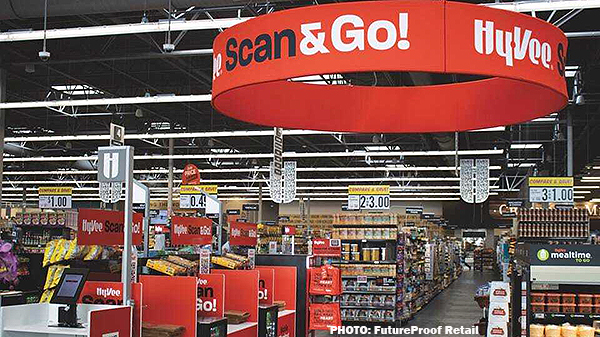With the tight labor market, cashierless shopping has never been more appealing.
“Anytime you have human beings doing something, it costs money,” says Bruce Peterson, CEO of Peterson Insights, Inc. in Bentonville, AR. “Labor cost is an area you can do something about. The whole idea is to take the labor out of the stores.”
Smart carts, which were first introduced in 2017, do just that. A number of grocers have been piloting the technology, including Kroger, Albertsons, Wakefern, and Sobeys, among others. Amazon debuted its Dash Cart in 2020.
The technology takes cashierless service one step further from the self-checkout lane that has been around for three decades.
Items are tallied as they’re placed in the cart; some smart carts require shoppers to scan bar codes. Carts equipped with computer vision-enabled cameras or sensors recognize items as they’re put into a cart.
Smart carts can include weight sensors, scan coupons and credit cards, display promotions and cross-selling opportunities, and integrate with a grocer’s loyalty program.
Other personalization features include integrating shopping lists and helping shoppers locate products within the store.
The credit or debit card linked to the shopper’s account is automatically charged, and a receipt is emailed to the shopper or available on the app.
For retailers wanting to add a grab-and-go shopping experience, smart carts can be a plug-and-play solution. Tracking shoppers’ movements can help retailers improve their planograms, signage, and targeted promotions.
This is an excerpt from the Applied Technology feature in the July/August 2022 issue of Produce Blueprints Magazine. Click here to read the whole issue.



